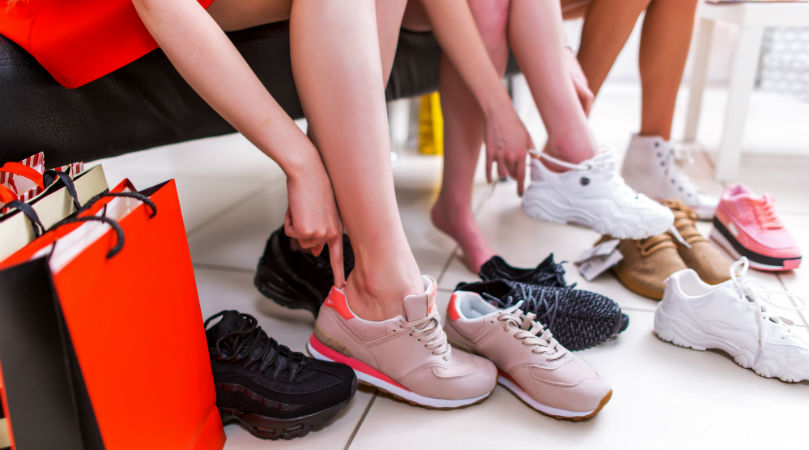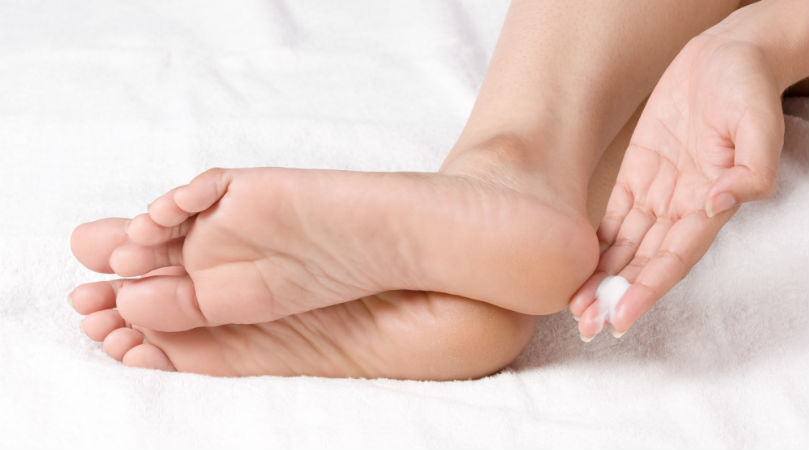Common Foot Care Mistakes (You’re Probably Making)
Are you treating your feet the way they deserve to be treated?
Be honest.
For a lot of us, the answer is, at best, “not really.” In fact, most people tend to take their feet for granted—right up to the point when they start hurting, of course.
And boy, do we have an epidemic of foot pain in this country. According to a poll done by the American Podiatric Medical Association in 2014, more than three quarters of Americans said they’ve experienced foot pain, and over half said that their foot pain limits activities such as walking, working, and exercising.
In many cases, though, their foot pain could have been prevented, or at least reduced, by paying attention to their feet and taking good care of them on a daily basis.
The habits you build at home are the ones that go the furthest in terms of preventing not only pain and injury, but also unsightly or unwanted infections like athlete’s foot, dry skin, warts, and more.
So, what foot care mistakes are you currently making? Here are some of the ones we see most frequently.
Spoiler: We’re starting with a lot of info about shoes, but keep reading—there’s more.

Your shoes are the wrong size.
Trust us, they are.
Although it’s hard to run a controlled study on this topic, most evidence suggests that maybe only a quarter of us are actually wearing the correct shoe size—which means the correct length and width.
And a poor fit can mean all kinds of problems. Pinched toes. Sore arches that don’t get enough support. Shoes that flop around and force you to alter your gait pattern to compensate. Much higher risk of corns, calluses, blisters, and ulcers. Increased fall risk in seniors.
We could go on, but you probably get the picture.
It’s really crucial that you always measure your feet and actually test shoes for comfort before you buy. Even adults sometimes change their foot size and shape as they age. Some other tips:
- Shop late in the day. This will ensure your shoes will still fit your feet even if they’re a little swollen.
- Wear appropriate socks when fitting. It makes a difference for the fit.
- Don’t rely on a shoe to “break in” over time. If it’s not comfortable, it doesn’t fit.
Your shoes are the wrong type.
Of course, even a pair of high heels that “fit correctly” isn’t going to be advisable footwear for standing or walking for long periods of time.
Likewise, if you’re training for a marathon, you wouldn’t pull your nicest pair of dress shoes out of the closet before going for a run. They might be comfortable for work or fancy dinner parties, but they aren’t meant for running!
You should always choose the correct shoe for the correct purpose. That means:
- Impractical shoes like high heels and flip flops should be worn sparingly, and only for limited periods of time.
- Keep your feet protected—don’t wear your comfy sandals on a construction site, for example!
- Get a sport-specific shoe that matches your activity.

Your shoes are too old.
Don’t worry, these won’t all be about shoes!
Remember that shoes do have a finite working lifespan—particularly athletic shoes.
Take running shoes, for example. Most pairs will wear out after somewhere between 300 and 500 miles logged, even if you take meticulous care of them. Sooner or later, the midsoles will compress and won’t be able to dampen shocks the way they used to. More of those forces then get transferred to your soft tissues and bones, with painful results.
You wear the same pair every day.
Last one about shoes. We’ll keep it short and sweet.
Stinky, sweaty shoes make a great place for unwanted bacteria and fungi to congregate—the kind that can lead to athlete’s foot, fungal nails, and other undesirable infections.
One of the best ways you can prevent this is by rotating your shoes so that each gets more than a full day of “drying out” time after each use. For even better results, apply talcum powder. And always switch to a new pair of socks and/or shoes if they get damp, even if it’s the middle of the day.
You aren’t cleaning and moisturizing your feet properly.
“I take a shower every day” isn’t going to cut it, at least not on its own. Simply standing while the water rains down on you isn’t enough!
Make sure your feet are getting some love. Gently wash and scrub your feet with a soapy washcloth, including the areas between the toes. Do this at least once per day.
Make sure your bath or shower isn’t too hot, though! Hot water actually extracts moisture from your skin, and can lead to problems like cracked heels.
After washing your feet, dry them thoroughly. Then, once your skin is dry, apply moisturizing lotion to your feet (but not between the toes), and put on a clean pair of socks.

You aren’t trimming your nails correctly.
Improper nail trimming is a frequent cause of ingrown toenails and fungal toenail infections. The biggest mistakes that most people make are cutting their nails too short, and rounding the corners too much.
Instead, you should keep your nails about even with the tip of the toe and cut straight across rather than rounded.
Use a pair of toenail clippers rather than regular fingernail clippers so you get a flatter cut and more leverage. Also, wait until your nails are clean and dry to clip, as wet nails are more likely to crack, tear, and split.
You’re neglecting your diabetic foot checkups.
This goes out to those with diabetes—currently estimated to affect 1 out of every 6 Americans.
If you have diabetes, you need to be manually inspecting your feet every day for cuts, scrapes, and other problems. Since diabetes can impair both your nerve function and your circulation, foot problems are not only harder to detect, but take longer to heal and are more likely to get infected. So a daily self-exam goes a long way to ensuring problems don’t escalate.
Furthermore, you should be checking in with Tucson Foot & Ankle Institute at least once a year for a comprehensive diabetic foot care checkup. We can often detect the early warning signs of poor circulation and neuropathy through diagnostic testing long before you notice symptoms on your own, and we have one of the most advanced neuropathy treatment programs in the country.
Simply making this yearly appointment, and keeping it, might be the most important health decision you ever make. It could be the difference between a lifetime of healthy activity or a preventable lower limb amputation.
You’re waiting too long to seek help.
That same APMA research we talked about in the introduction? It revealed that although 77 percent of Americans have suffered from foot pain, only about a third would seek medical help from a podiatrist.
That number is, frankly, way too low. And we’re not just saying that because we run a podiatric practice!
Although it’s true that minor aches and pains can often be treated at home with a little RICE therapy, it’s also true that many other foot problems have a bad habit of getting worse (and more difficult to get rid of) the longer you try to ignore them.
- Heel pain gradually becomes chronic and never seems to improve.
- Ankle sprains never quite heal properly, and become chronically arthritic and unstable.
- Bunions and hammertoes become more extreme, and arthritis worsens.
- Wounds and ingrown toenails don’t heal, and eventually get infected.
- A yellow spot under a toenail gradually grows to extensive discoloration and nail damage, and even spreads to other nails.
General rule of thumb here? If something hurts enough that it’s limiting your activity, or it continues to not improve or worsen over the course of several days, get it checked out. If you have diabetes, don’t even wait that long. And if you notice the early warning signs of a deformity or fungal nail infection, see us as soon as you can.
Often times, by seeking help early, we are able to counteract the problem conservatively, with minimal disruption to your life. The longer you wait, the more you suffer—and the more likely you’ll need aggressive treatments like surgery to improve your situation.
Have we convinced you? We hope so!
If you’re currently experiencing any pain, infection, or problem with your feet and ankles that you just can’t seem to shake, give Tucson Foot & Ankle Institute a call today at (520) 545-0202.
Contact Us
Office Hours:
Monday - Friday
8:00AM - 5:00PM
Tucson Foot & Ankle Institute:
7406 N. La Cholla Blvd.
Tucson, AZ 85741
Phone: (520) 545-0202
Fax: (520) 545-0201
© Tucson Foot and Ankle Institute. All Rights Reserved. | Privacy Policy

